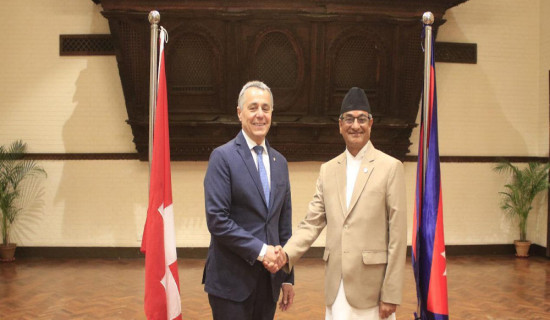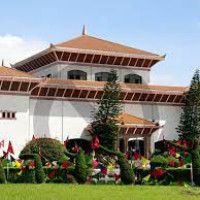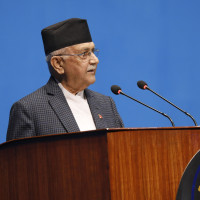- Monday, 7 July 2025
Songs of birds hint at onset of spring season
By Indira Aryal,Kathmandu, Apr. 6: This is the season for the departure and arrival of migratory birds -- departure of winter visitors and arrival of summer trippers.
Summer visitors are more vocal. Among the summer visitors, cuckoos produce sounds and people localize their sounds. Everyone probably heard the sound of Kafal Pakyo, Biu Kuiyo, Koho-Koho, Gol Simal and Kuhu-Kuhu.
These are the birds that arrive during the pre-monsoon season to stay until the end of summer and breed here as they find favourable environment and climatic conditions for raising their babies. They start arriving in Nepal from the last week of February.
The arrival of the birds heralds the onset of the spring season in Nepal, said senior ornithologist Dr. Hem Sagar Baral. Species like Asian paradise flycatchers, locally known as swargachari, Chestnut-headed bee-eaters, known as katush tauke mur litchar, Blue-bearded bee-eater known as madhumakchhi vakshak, Indian pitta known as gajelepitta, Western hooded pitta known as chitrak pitta, black-naped monarch, rajchari in Nepali, Indian golden oriole known as gajale sunchari, Silver-backed needletail known as chadidhade gauthali and a dozen variety of cuckoo are the summer visitors in Nepal.
Dr. Baral, who is also Country Head of the Zoological Society of London, said that out of nearly 60 species of summer visitors or spring visitors, cuckoo families are the most dominant in Nepal as one-fifth of the summer visitors are cuckoos.
Summer visitors start arriving in the country in the spring season and the earliest ones to arrive in the species is chestnut-headed bee-eater. The arrival of this species indicates the arrival of the spring season. The latest arrival species is the pied cuckoo known as Jure koili.
Summer arrivals are non-vegetarian birds whereas winter visitors are both vegetarian and non-vegetarian. All the summer visitors eat insects. Cuckoos are specialized in eating caterpillars. “This is the time we see a lot of caterpillars, so even to control the population of caterpillars and many other insects, we need these birds,” Dr. Baral said.
Summer is the breeding season for birds. Another interesting part is this: Asian Koel lays eggs in crow’s nests. Male Koel is black like a crow, it disturbs the female crow by dancing around it, forcing the latter to leave the nest. When the female crow leaves the nest, the female Koel lays eggs in the crow’s nest, leaves them there and flees.
Dr. Baral said all the migratory cuckoos that arrive in Nepal are brood parasites. They trick other birds into raising their offspring. They sneak their eggs into other parents’ nests, which then feed, protect and raise the parasite’s young as foster parents. They choose a common bird, which is found here in abundance, for brood parasitism. They are very clever. People rightly say cuckoos are moreclever than crows, he said.
The most vocal cuckoos arrive in Nepal from South India, North East States and South East Asia. Some of these migratory birds come from Sub-Saharan Africa travelling a distance of more than 5,000 kilometres to Nepal.
There is another difference between winter and summer visitors. Winter visitors generally come to Nepal from the North while summer visitors come from the South. The pied cuckoo, whose journey starts in Sub-Saharan Africa, is the species of cuckoo that travels the longest distance of all.
All migratory birds that come to Nepal every year reach various forests in the Tarai, the hills, and the foothills of mountain areas. They search for special habitats and cleaner environments.








copy-square-thumb.jpg)







